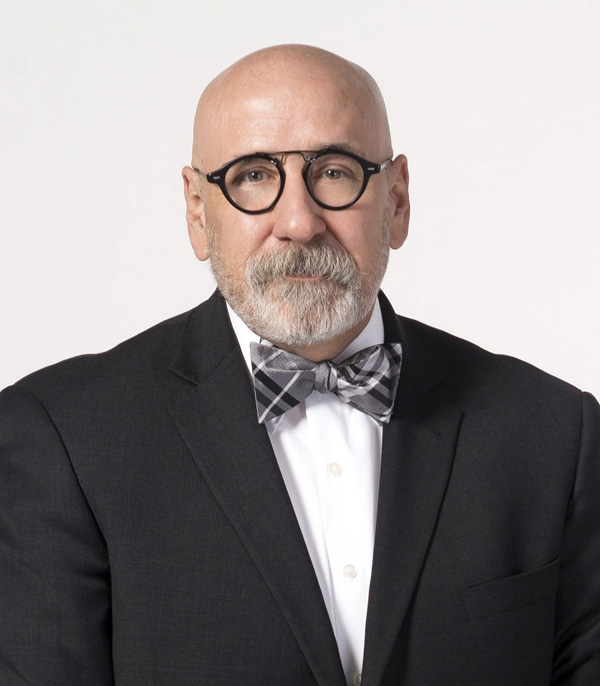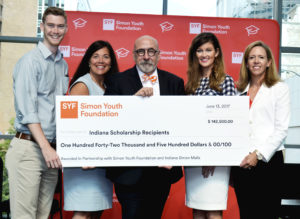
In 2010 Simon Youth Foundation (SYF) entrusted DRG Search to help it find its next leader to take its work with at-risk high-school students to the next level. SYF sought an exceptional educational leader with the gravitas and skill to elevate its fundraising, build awareness and strengthen impact. DRG secured Dr. J. Michael Durnil, a nationally recognized university professor, administrator, and innovator, who was appointed by the SYF Board as President and CEO in December of the same year.
Durnil holds a deep commitment to the education of young people, “I’m an educator at heart. As President and CEO of SYF, I have the opportunity to travel the country and witness the measurable impact that the teachers and administrators in Simon Youth Academies make in the lives of students every day. With 30 Academies in 12 states – and ambitious plans to add new Academies in the years ahead – I’m grateful to play a role in ensuring more students receive the education and support they both need and deserve.”
Read below to hear Michael talking about his approach to work and how the organization has matured under his leadership.

While I have several core principles and values that guide my work, two stand out above the rest: education and excellence.
First and foremost, I can wholeheartedly say that I would not be where I am today without my education. Thanks to encouragement from great teachers and access to programs that allowed me to excel, I set out on a different path than many of my peers. While no two situations are exactly alike, I can identify with the challenges that Simon Youth Academy students overcome to fulfill their dreams. I’m committed to making that a reality for thousands of more students.
At the same time, I believe you should always strive for excellence in your work and in your interactions. SYF exists to ensure students who are at risk of dropping out of high school not only graduate, but go on to pursue post-secondary education opportunities. In order for us to accomplish that goal, we must work in the now, plan for the future – and deliver excellent results at every point.
What was your perception of the organization before joining SYF and how has it changed over time?
From the outset, I was impressed by SYF’s mission and its potential to positively impact students and communities. At the time, SYF was in its 13th year. Much like a typical teenager, it was going through an “awkward adolescence” phase – pieces of SYF were maturing at different paces and need to coalesce. That said, the Board of Directors – like any parent! – knew they had something great, which solidified my decision to take the helm.
Over the last eight years, the organization has matured, enabling us to realize its full potential to impact today’s youth. We maintained a 90 percent graduation rate – above the national average! – as we expanded to 30 Academies across 12 states. We helped more students continue their education through our Simon Youth Scholarships, awarding $17 million since SYF’s inception. And we demonstrated SYF’s economic impact on students, families and communities.
In Nashville, for example, we have three Simon Youth Academies that have helped almost 3,000 students walk across that graduation stage and turn their tassels. Over their lifetime, each of those students will now earn $450,000 more (on average) than they would have without their diplomas. Collectively, that is a roughly $13 billion economic impact on Nashville alone. But what is most incredible, is that it costs SYF roughly $1,000 per student to get a student across that stage. Not many others can boast of such an ROI!
Through this work, I’ve witnessed a subtle yet seismic shift over the last eight years: SYF has emerged as a leading advocate of alternative education. With the support of SYF’s Board of Directors, I look forward to building on this progress and tackling bigger goals in the coming years.
What was the first thing you did when you joined as President & CEO?
I listened for six months! When I accepted the role as President and CEO, the Board charged me with creating an organization that was scalable and sustainable. To succeed, I knew I needed to take time to fully understand the nuances of SYF and where to focus my efforts. Through that process, I identified three priorities in my quest to sustain and scale SYF.
The first priority was to mature the organization through adolescence. As I said before, SYF was at an interesting point in its history when I joined. The organization was like a teenager – full of potential and energy, but in need of guidance to help it navigate through challenges and keep its eyes on long-term goals.
That brings me to my next point – realigning SYF’s mission. When the Board hired me, I knew they wanted me to apply the capital I gained through previous President / CEO roles to help SYF go from where it was to where it wanted to be. I developed a strategic framework to shift our focus from chasing dollars to executing great programs, delivering strong results and increasing awareness of our impact – all of which support our fundraising goals.
Finally, I knew that these efforts would only be successful with a strong and supported team, and clear systems and procedures to guide SYF’s work. As such, I established leadership competencies to foster a culture of accountability and transparency among the SYF team. With high expectations in place, I was able to create vertical / horizontal integration across the organization. For example, rather than viewing fundraising or programs as isolated efforts, team members identify and embrace the synergies between their work.
Today, these systems continue to help SYF maximize our resources and team capacity – ultimately, enabling us to transform the trajectory of students’ lives across the country.
How are you working with the board to develop new initiatives that would give SYF an edge into the latest educational technology to help struggling students graduate?
SYF’s Board of Directors is comprised of dedicated individuals who believe deeply in SYF’s mission. They lend their time, talent and treasure to support our work because they know we make a measurable impact on students, families and communities across the country.
That said, I will – with the Board’s support – take a contrarian view to this question. It’s not about educational technology.
Though tempting to search for a silver bullet or to see technology as a driving force in education, helping struggling students graduate is more about “high touch” than “high tech.” The genius of the one-room schoolhouse is that teachers want to teach and students want to learn. As such, technology is more of a means to an end, rather than an end itself.
Grounded in this belief, our Board is focused on fostering partnerships that help students prepare for success after they graduate. For example, as a longtime supporter of SYF, CVS leverages its resources to benefit our students. As a company, CVS has offered training curricula for students seeking employment in the retail and pharmaceutical fields, and has also provided scholarship support to qualified students.
Similarly, we recently partnered with Starbucks to provide workforce development coaching for SYF Academy students and graduates. Through this partnership, our students participate in mock interviews and receive feedback on how to improve their interview skills and resumes – plus, Simon Youth Academy graduates and scholarship recipients receive preferred interview status!
In the coming year, we aim to build on these types of partnerships and expand the opportunities available to our students, graduates and scholarship recipients.
Anything else you would like to add?
Forty years ago, the majority of U.S. jobs required a high school degree or less. Today, 90 percent of jobs require a high school diploma – and more than half require some post-secondary credential. When you consider the fact that 35 percent of Simon Youth Academy graduates are the first in their family to earn a high school diploma, you understand how critical our work is to the future of children, families and communities across the country.
That said, the story of SYF is so much more than any one statistic.
Take Peter Morin, for example. At 17, Peter was struggling in the traditional high school setting. Facing challenges in his personal life, Peter watched his friends dying or ending up in prison. He knew he wanted a different path, and he found the support he needed to make that a reality at our Simon Youth Judson Learning Academy at Rolling Oaks Mall.
Peter’s story doesn’t end there. After graduating and going to college, he returned to the same Academy that gave him a second chance 17 years later – this time, as a teacher!
I share that story because our students, like Peter, overcome unimaginable obstacles to earn their high school diplomas and begin new journeys previously thought unattainable. Now more than ever, SYF is a critical partner in the success of our communities, districts and students.
What challenges does SYF face at the moment?
“Like most nonprofits, SYF relies on the generous support of individual, corporate and philanthropic donors. As we seek to reach even more students through our Simon Youth Academies and Simon Youth Scholarships, we must continue to focus on cultivating new donors, fostering new partnerships, and ensuring a brighter future for the students and communities we serve.”
Tell us about a new initiative/strategy/project at the SYF and what you envision it will do for the community of at-risk students you serve?
In the coming years, SYF has ambitious plans to launch new Academies and reach even more students across the country. As we expand our footprint, we are focused on meeting the unique needs of the students we serve. To accomplish this, we partnered with the Center for Effective Philanthropy (CEP) – a national nonprofit – to capture, analyze and act on data about our students.
In 2015, CEP conducted a YouthTruth Student Survey that asked our students to evaluate their experiences across six key themes: student engagement, academic rigor, relationships with teachers, relationships with peers, school culture, and college and career readiness. CEP compiled the responses and provided ratings for other comparable schools across the country, enabling us to identify areas in which we excel, as well as areas to target for improvement.
For example, school culture is usually one of YouthTruth’s lowest rated themes across the country. Yet, five Simon Youth Academies were in the top five high schools in the country for school culture – and this is based on data from more than 80,000 students across 24 states!
Though proud of this validation, we saw an opportunity to improve our students’ relationships with peers; specifically, how emotional and mental health impacts their satisfaction in this area. After learning that nearly 20 percent of our students considered suicide in the previous year, we partnered with Hope 4 the Wounded to help our teachers access resources and develop skills to help students cope with stress and anxiety.
Anecdotally, we received very positive feedback from students and Academy leaders on the implementation of this program. We will soon receive our 2017 survey responses, and look forward to comparing 2015 and 2017 data, as well as gleaning new insights to inform our future work.
